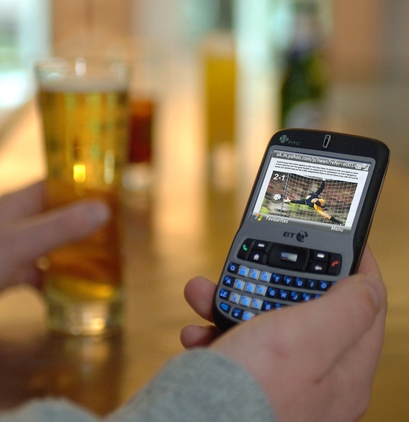New Standard Takes The Pain Out Of Wi-Fi Hotspots

Future hotspots will take the strain, moving users easily from mobile to Wi-Fi networks
The next generation of Wi-Fi hotspots could be an easier experience for smartphone and tablet users, thanks to a new standard which has been successfully tested.
Where users currently have to scan for Wi-Fi signals and then connect manually using a password, the experience as easy and invisible as moving between one cell tower to another on the mobile phone network, thanks to the Next Generation Hotspot (NGH) standard which has been tested by a group of telcos and vendors including BT, Orange, AT&T, NTT DOCOMO, China Mobile, Cisco, LG, Intel and BelAir.
Next Generation Hotspot
The standard comes from The Wireless Broadband Alliance (WBA) of operators and vendors, which has worked with the Wi-Fi Alliance (the body which puts the Wi-Fi logo on compatible devices).
NGH aims to make it much easier for users to locate and use a hotspot. At the moment, many Wi-Fi hotspots operate on the principle that the user has to scan for the hotspot, and then usually has to supply a username or password in order to connect and use it.
The NGH on the other hand aims to operate more like a mobile phone network, where a user is unaware that his connected device (i.e. a smartphone) is latching onto different cell towers.
The thinking is that the next generation of Wi-Fi hotspots will allow devices to jump from a mobile network and automatically connect and bypass the manual login process for the Wi-Fi hotspot.
 Mobile and fixed-line operators often have a partnership arrangements with hotspot operators, or indeed own their own network of Wi-Fi hotspots. With NGH, mobile operators especially could offload mobile users who are surfing the web on their handsets and swallowing up valuable capacity on the overtaxed mobile network, onto a nearby Wi-Fi hotspot.
Mobile and fixed-line operators often have a partnership arrangements with hotspot operators, or indeed own their own network of Wi-Fi hotspots. With NGH, mobile operators especially could offload mobile users who are surfing the web on their handsets and swallowing up valuable capacity on the overtaxed mobile network, onto a nearby Wi-Fi hotspot.
It should also overcome the issue of users not knowing which hotspots they can access, or indeed how to connect, as NGH does it all automatically.
There are security implications from the use of Wi-Fi hotspots, but the WBA says that NGH hotspots will offer ‘similar levels of security to the cellular network including end-to-end radio link encryption and SIM authentication.’
Twelve Month Arrival
The WBA expects the first NGH deployments to take place over the next twelve months and will be organising trials of more advanced technology features in second half of 2012.
“The complementary relationship between Wi-Fi and mobile networks is finally becoming a reality. Next Generation Hotspots allow smartphones and tablets to automatically roam from the cellular network on to Wi-Fi hotspots thereby augmenting the coverage and capacity of both,” said Chris Bruce, Chair of the WBA.
“Fixed and mobile operators alike are leading a Wi-Fi hotspot renaissance in a renewed effort to sate the seemingly unquenchable desire for ubiquitous broadband connectivity,” Bruce added. “What has made this trial so unique is that the key players from both the mobile operator community and the Wi-Fi ecosystem have actively come together and supported each other for this industry-wide program. The future is a great broadband experience that operates over all sorts of different technologies.”
How much do you know about smartphones? Take our quiz!